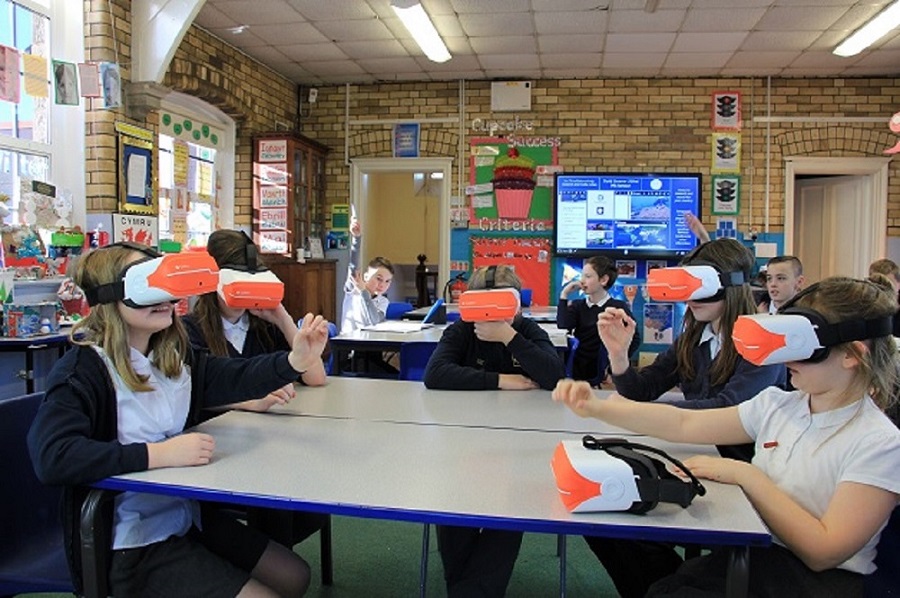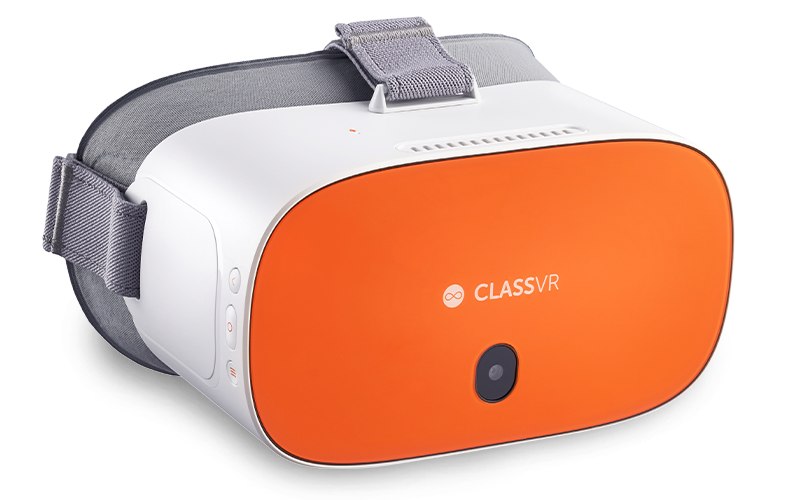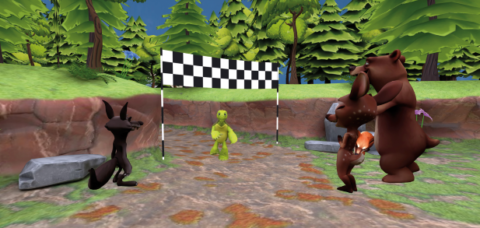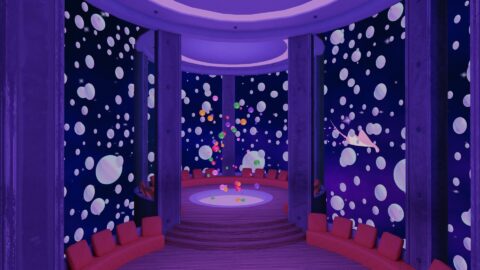ClassVR is the world’s first complete virtual and augmented reality set designed specifically for schools, with standalone headsets, intuitive gesture controls, a huge library of content and an easy-to-use teacher management portal.
Here we have collected just a few of our favourite ways for bringing virtual and augmented reality to the classroom, based on what teachers in our schools, colleges and universities have already achieved with their students.

1. Bring Physical Geography to Life
Let’s face it – sometimes teaching about coastal erosion or the formation of glacial landscapes isn’t the most captivating material, but 360 images are totally perfect – not only for engaging students, but for bringing their attention to crucial details in the landscape that they otherwise they might miss. Immersing your students in an image of a landscape, and then asking them to look for clues about how the landforms may have changed over time, is a brilliant way to unlock the world of physical geography.
2. Tap into Emotion and Empathy
You know the saying about walking a mile in somebody’s shoes? 360 videos offer an incredible opportunity to do exactly that. This can be very powerful for older students, giving them much more of an insight into situations they could never experience for real. Try guiding your students through war-torn streets and listening to the passionate discussion that flows afterwards. You could even compare this to the quality of the discussion that comes from reading a textbook alone.
3. Look Inside the Body
Augmented reality makes it easy to bring anatomy into the classroom safely. ClassVR headsets include a front-facing camera and our own ARC app, so your students can get up close and personal with a beating heart, just by looking at one of our worksheets. 3D models offer the perfect opportunity to visualise the organs and systems that make our bodies work.
4. Experience Other Cultures
The everyday aspects of life can sometimes offer students a way to begin understanding cultures that are different from their own. What is it like inside schools around the world? How does shopping work in different places? What about other events like weddings and festivals? Virtual reality allows your students to experience what’s unique about other cultures
5. Take a Closer Look
It can be difficult to give students the opportunity to examine things closely, whether that’s an intricate machine, an historical artefact or an underwater environment teeming with life. By using VR and AR, students can take as much time as they need to find the key details that unlock new connections – like the moving parts of a steam engine, or the hieroglyphics on a sarcophagus.
6. Unlock Students’ Creative Writing Potential
Particularly powerful for younger students, or those who have additional needs. Just ‘being’ in a story setting can have an amazing impact on written work. The descriptive language of students is a lot more natural when they are immersed in an image or a scene.
7. Immerse your Students in Artworks
Virtual and augmented reality can offer fantastic opportunities for teaching art in schools and colleges. Imagine holding The Thinker by Rodin in your hands, and being able to see every angle of the 3D model. VR is the ultimate visual medium, so what better way to experience art.
8. Get your Topic off to an Unforgettable Start
Every teacher knows that engagement is key. Virtual and augmented reality adds a fantastic opportunity to inspire and delight students of all ages. Kick-start a space theme with a trip to Mars or see the Earth springing up from the page. The possibilities are endless!
9. Empower Students to Add their Own Content
The ClassVR system has been designed to work with standard file formats, so your students can experience taking their own 360 video or photo and sending it straight to the headsets. Teachers and students alike are getting excited about the creative possibilities across the whole curriculum.
10. Take Inclusion to the Next Level
When it’s easy to use and intuitive, virtual reality can be a brilliant tool for students with special educational needs. ClassVR is controlled by using basic gestures, such as tilting your head side to side, or making a ‘thumbs up’ sign, which most adults and children can master. The ability to upload new content easily also makes ClassVR perfect for those students who need a chance to get used to new environments.



